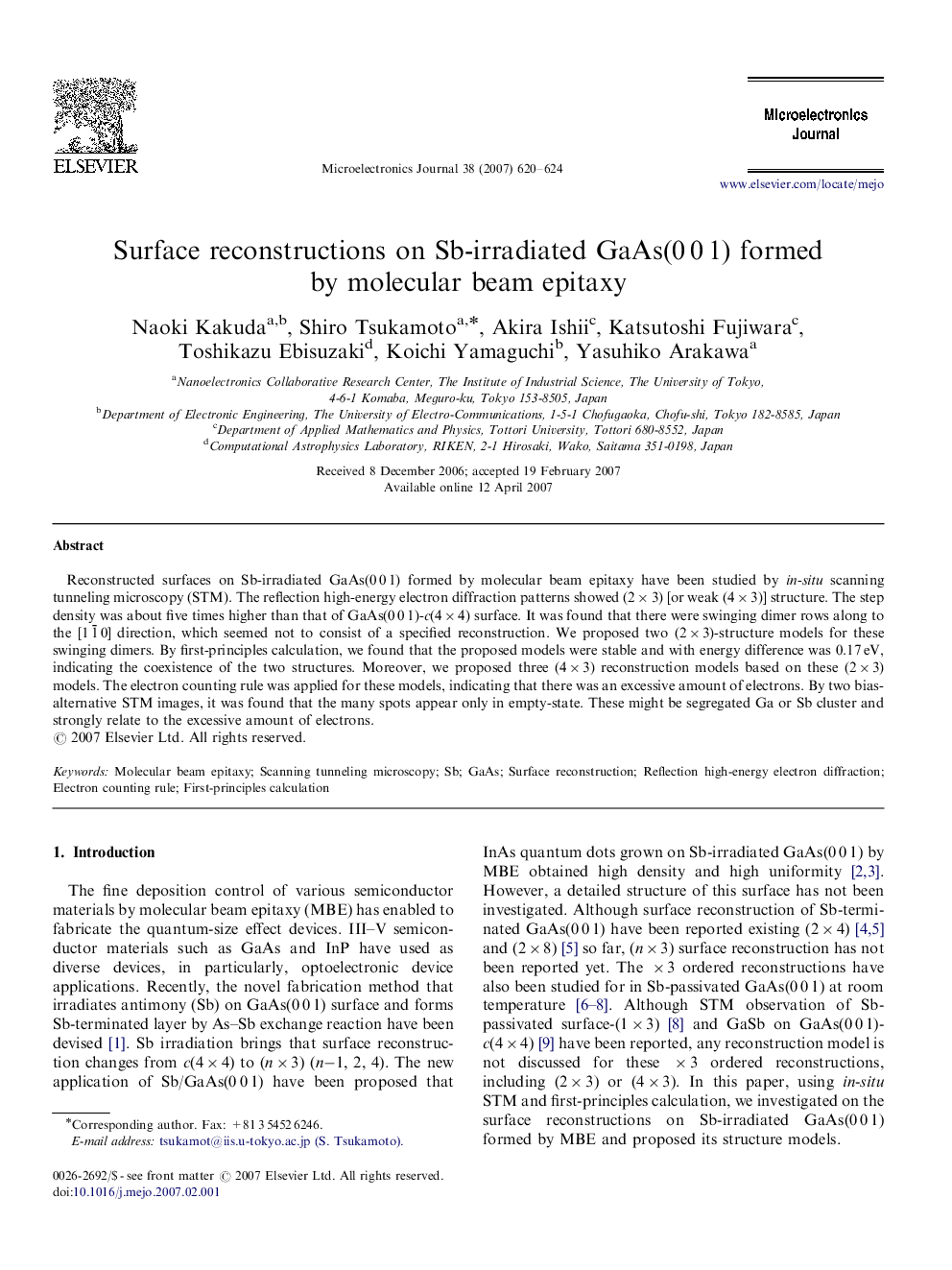| Article ID | Journal | Published Year | Pages | File Type |
|---|---|---|---|---|
| 546669 | Microelectronics Journal | 2007 | 5 Pages |
Reconstructed surfaces on Sb-irradiated GaAs(0 0 1) formed by molecular beam epitaxy have been studied by in-situ scanning tunneling microscopy (STM). The reflection high-energy electron diffraction patterns showed (2×3) [or weak (4×3)] structure. The step density was about five times higher than that of GaAs(0 0 1)-c(4×4) surface. It was found that there were swinging dimer rows along to the [1 1¯ 0] direction, which seemed not to consist of a specified reconstruction. We proposed two (2×3)-structure models for these swinging dimers. By first-principles calculation, we found that the proposed models were stable and with energy difference was 0.17 eV, indicating the coexistence of the two structures. Moreover, we proposed three (4×3) reconstruction models based on these (2×3) models. The electron counting rule was applied for these models, indicating that there was an excessive amount of electrons. By two bias-alternative STM images, it was found that the many spots appear only in empty-state. These might be segregated Ga or Sb cluster and strongly relate to the excessive amount of electrons.
